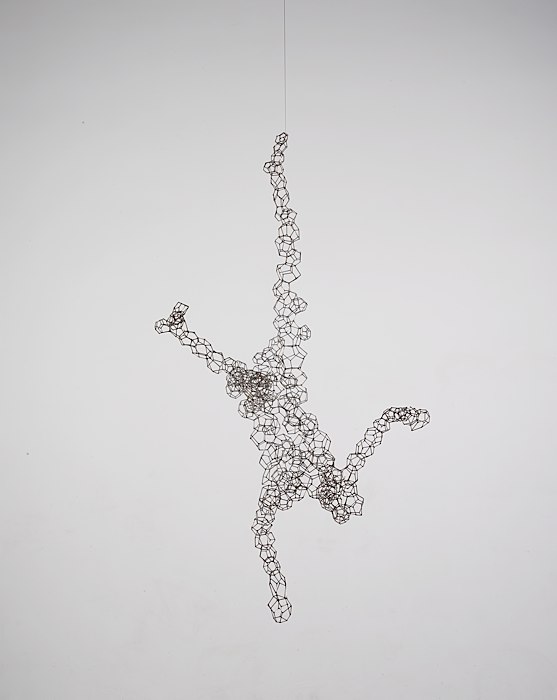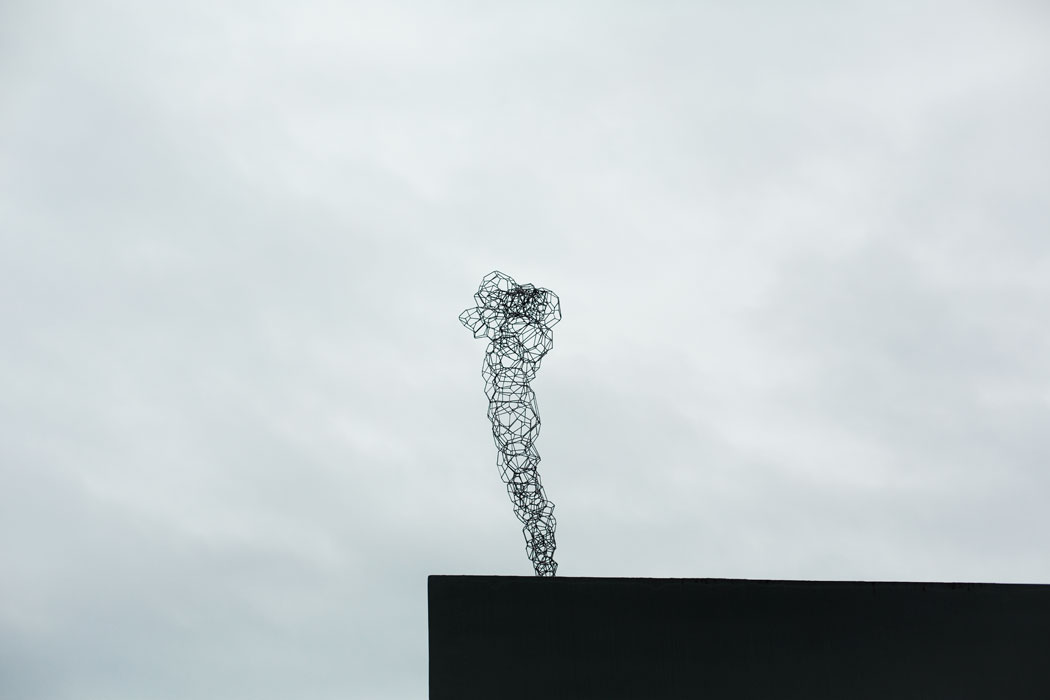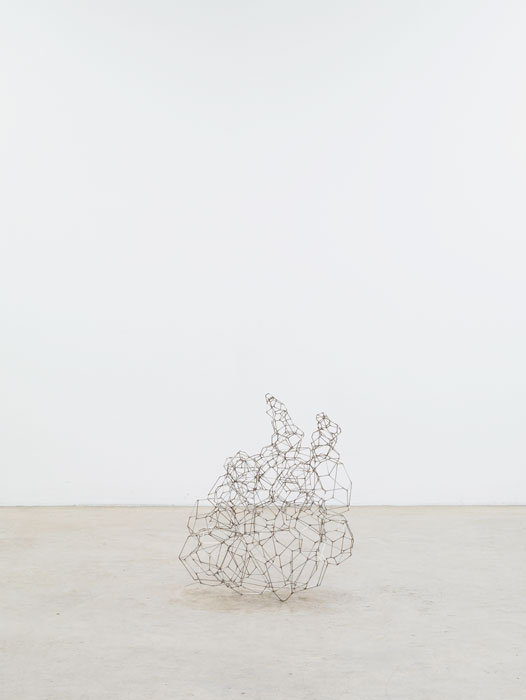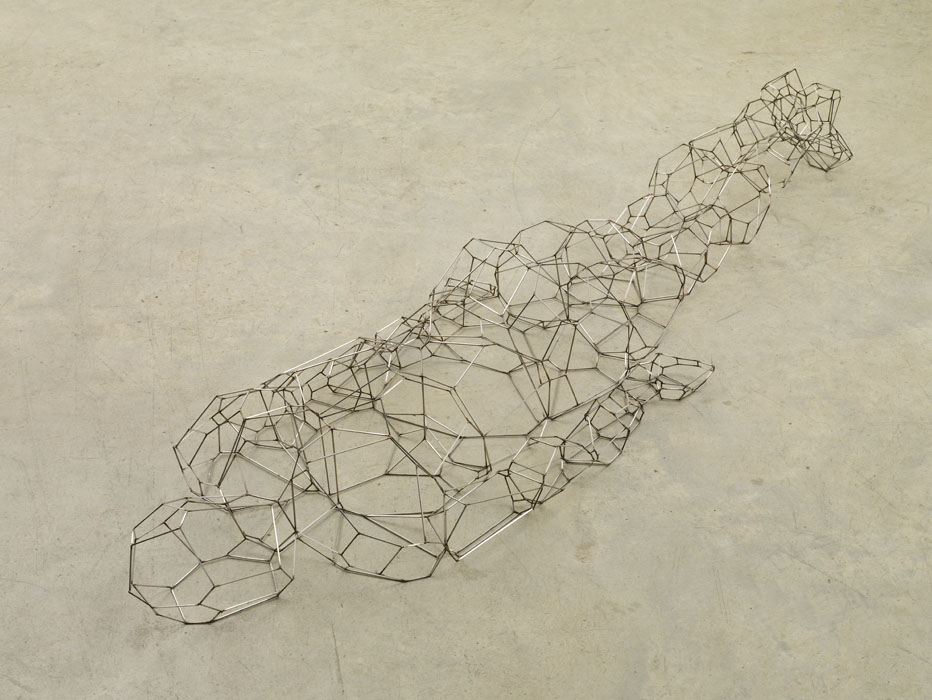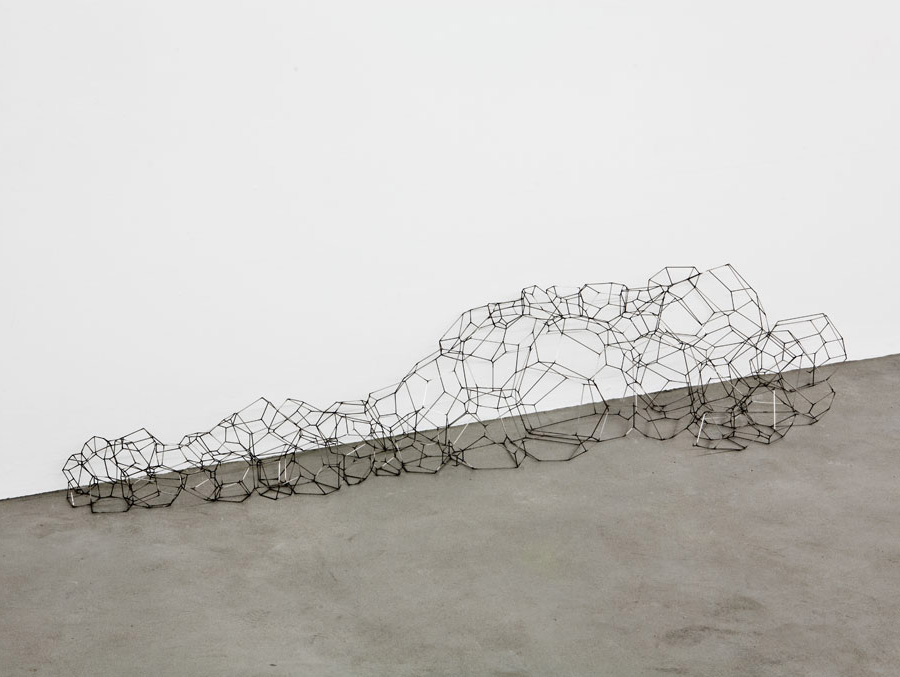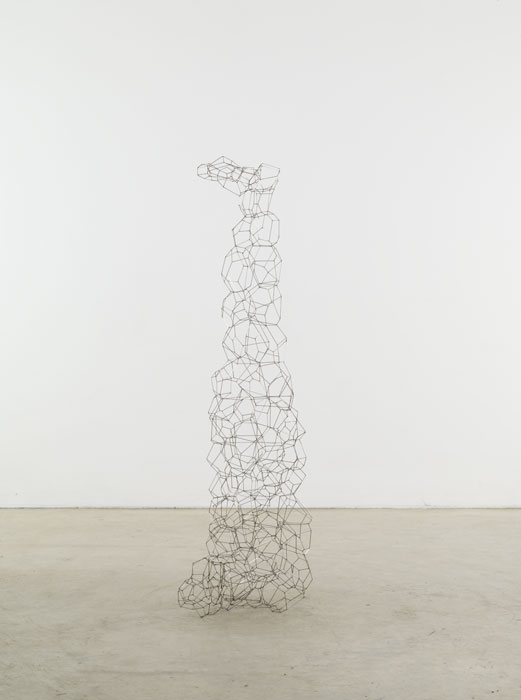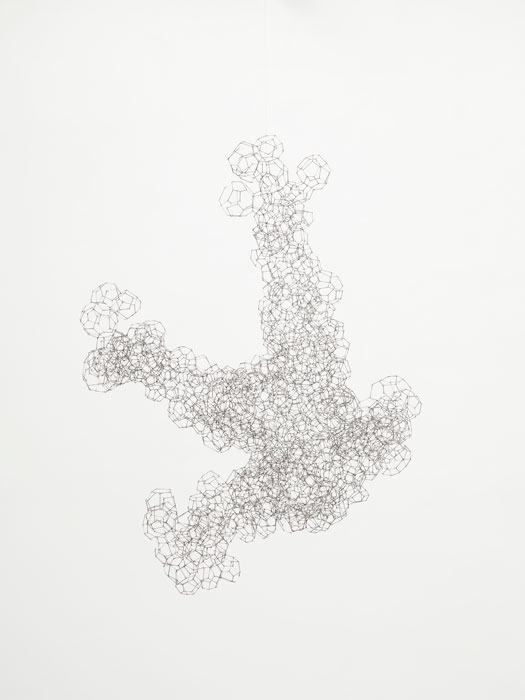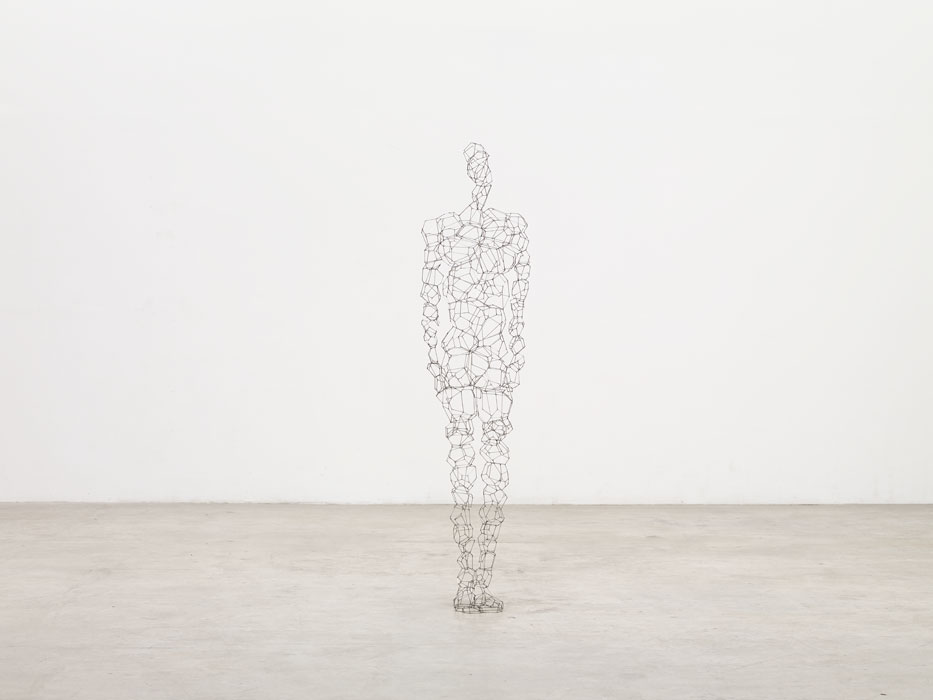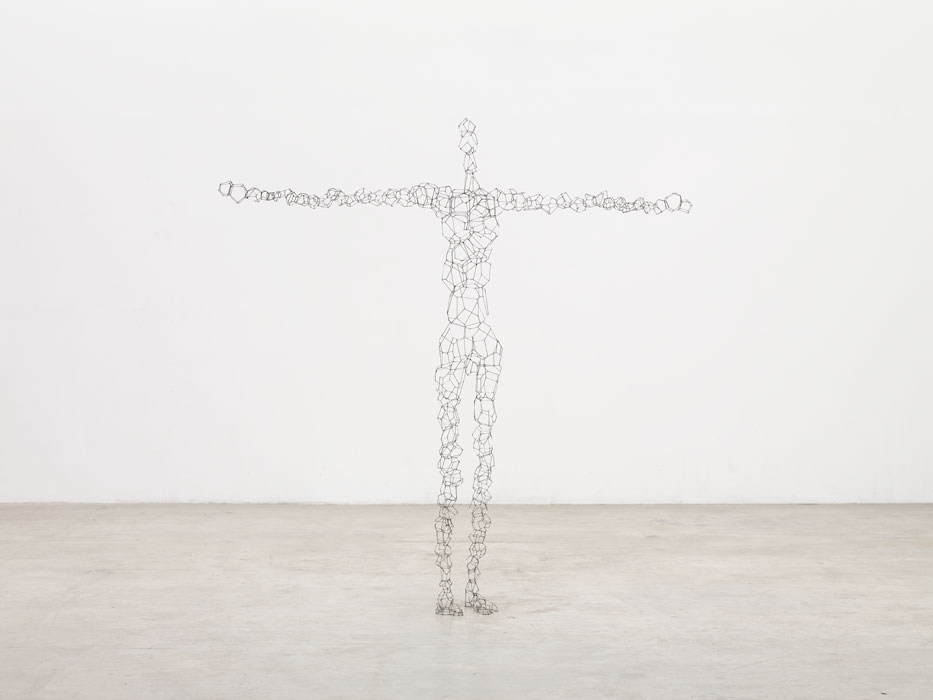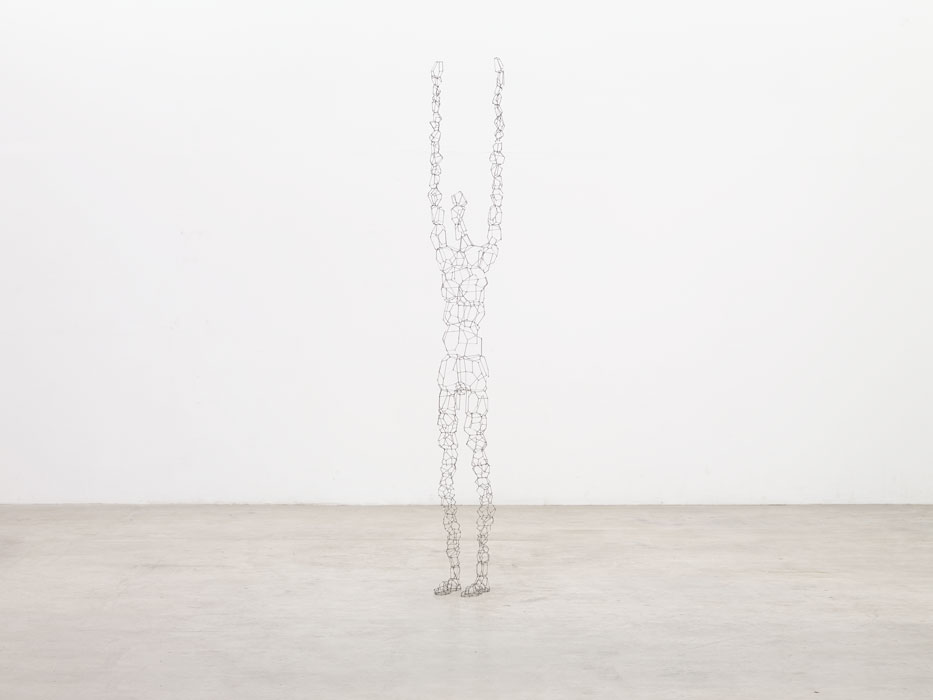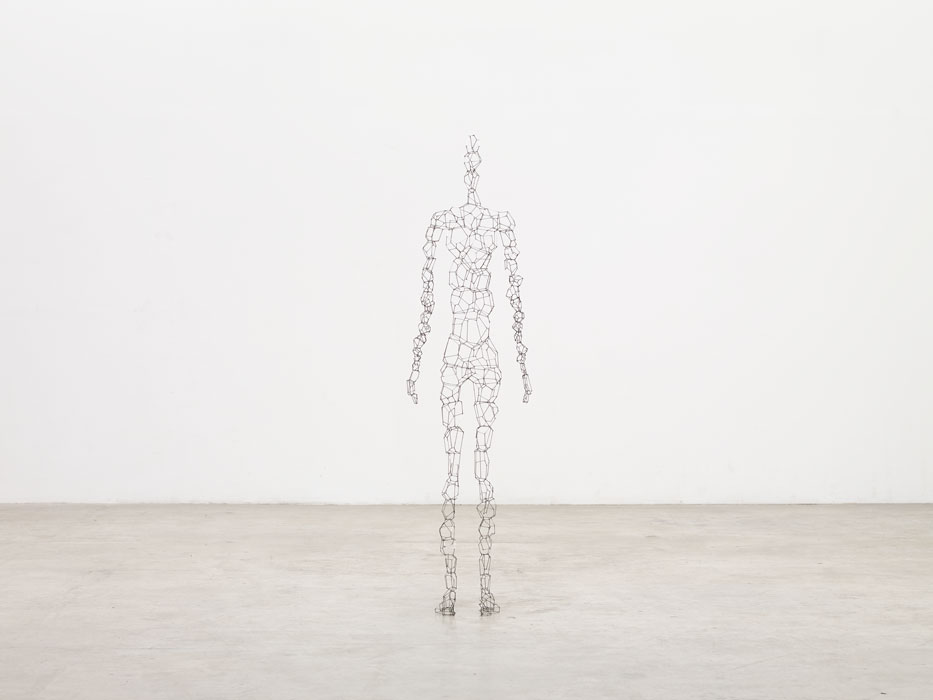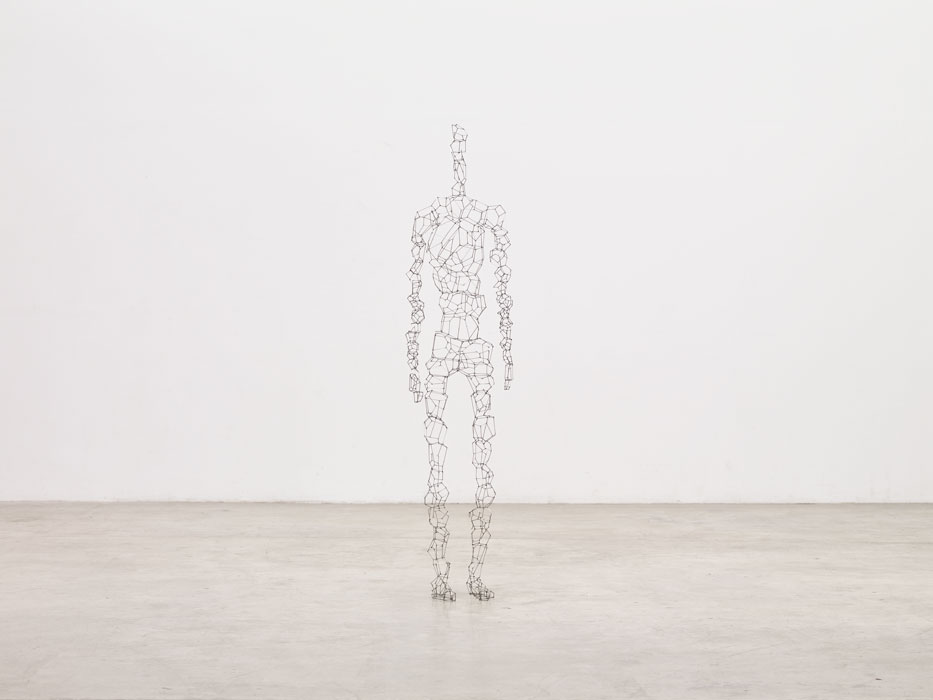The POLYHEDRA series, which began in 2008, replaces an anatomically described body with one made of tightly nested and sharp-edged polygonal cells. This sculptural language derives from natural structures: the polycrystalline aggregation of basalt or quartz and the bubble matrices in foams and bone. The works BRIDGE (NET) and FIX (NET) (2017) recall in their condensed forms an earlier series, INSIDERS (1997- 2005), which isolates the body's core and concentrates internal sensation. These fine webs or nets are made in fine stainless steel bar: three-dimensional drawings that tremble in space.
All matter has three states: gaseous, liquid and solid. I'm trying to find this hinge between a fluid thing that's becoming solid, but also a bridge to the beholder's share in engaging with and interpreting these forms. Forms that on the one hand purport to stand for the place of a body, and therefore have human characteristics, but on the other are actually an aggregation, with the precision of geometry, but at the same time, you could say, are completely aleatory. This means that as you walk around them (and I think it's good to walk around them), they come together in different ways, and hopefully, in coming together, constitute a different sort of object. They're mutable. Put another way: as you turn around the corner of the work, it triggers a different kind of emotional engagement.

